Adopt an Orchid Project
10 Years of ADORP from 2011 to 2020
Click here for the presentation given by Kevin Uhe at the April 2021 General Meeting.
2019 Orchid Conservation Symposium Presentation
Click here for the 2019 Orchid Conservation Symposium presentation at Royal Botanic Gardens Victoria given by Andrew Brown.
Western Australia’s Adopt an Orchid Project
Four ADORP taxa in more detail:
- Caladenia dundasiae
- Caladenia uliginosa subsp. patulens
- Thelymitra magnifica
- Paracaleana gracilicordata
Adopt an Orchid – Diversity
- With an estimated 711 genera and 5710 plant species the south-west of Western Australia has one of the worlds most diverse and unique floras and is considered a major biodiversity hotspot.
- It is not only rich in species diversity but almost 80% of the native plants in this area are endemic.
- Unfortunately this corner of Western Australia has been subject to extensive human induced change which threatens the survival of many of its unique plant species.
Adopt an Orchid – Threats
- Since European settlement in1829 over 80% of the natural vegetation in the Wheatbelt Region of Western Australia along with large areas of coastal vegetation between Geraldton and Albany have been cleared.
- Much of the remaining bushland is fragmented and often degraded and is surrounded by cleared pasture or housing,
rendering it vulnerable to further human influences.
Threats to the remaining areas of natural vegetation include further clearing, water drawdown, disease, salinity, frequent burning and weed invasion.
Even the large areas of State Forest are subject to threats that adversely affect our native orchids
- Prescribed burning has resulted in a dramatic decrease in both orchid composition and abundance.
- The spread of the root-rot disease commonly known as dieback has the potential to kill up to 40% of native plant species and dramatically change the habitat occupied by orchids.
Global climate change has caused uncertain weather conditions and increased periods of drought which threaten to overturn the delicate balance for survival for many native plant taxa, including orchid.
Adopt an Orchid – Rarity
- These threats, both individually and combined, have led to large population declines of many orchid taxa in south-west Western Australia and it is not surprising that some orchids that were once common are now rare.
- An example is Caladenia huegelii which was almost certainly once abundant between Perth and Capel but now occupies mostly small bush remnants, the majority of which are wedged between housing estates or areas of cleared farmland.
Adopt an Orchid – Threatened Flora
• Under Western Australian legislation, the Biodiversity Conservation Act 2016 provides for the protection of plant taxa that are under threat of extinction, are rare or are in need of special protection.
• Termed Threatened Flora, such taxa may not be removed or collected from any lands (including private land) without the permission of the Western Australian Minister for the Environment.
• As at June 2019, 427 plant taxa including 41 orchid taxa are listed as Threatened Flora.
Adopt an Orchid – Priority Flora
- In addition to those plant taxa that are protected by legislation there are many other potentially rare or threatened plant taxa that do not currently receive any formal protection.
- These taxa are known from few sites and may potentially be rare or under threat, but cannot be declared as Threatened Flora until proper assessments have been undertaken.
- The Department of Biodiversity, Conservation and Attractions (DBCA) lists these plants as Priority Flora as they are a high priority for monitoring and assessment for listing as Threatened Flora.
- There are currently 3182 Priority Flora in Western Australia, 66 of which are orchids.
Priority Flora are placed into one of four conservation categories with Priority 1 taxa thought at most risk of population decline and Priority 4 taxa at least risk.
- In Western Australia DBCA is the Government agency responsible for the protection of our flora.
- However, just four full time Perth staff and 15 mostly part time regional staff are involved in flora monitoring and recovery, and the Department is necessarily focussed on implementing programs for Threatened Flora.
- Much less time is available for Priority Flora which, at best, receives a rudimentary amount of monitoring and survey by Departmental staff.
Adopt an Orchid – Background
- Many Priority Flora taxa are likely to be genuinely rare and potentially could be highly threatened but, as little is known about their distribution, population sizes and the threatening processes affecting them, their conservation status cannot be accurately assessed.
- This information is essential if these taxa are to be nominated for listing as Threatened Flora and is also required for the development and implementation of on ground protective measures.
- A way to address the huge task of assessing the conservation status of such a large number of Priority Flora is to enlist the services of volunteers who can each adopt a taxon or group of taxa and undertake monitoring and surveys.
- In 2011 the Western Australian Native Orchid Study and Conservation Group (WANOSCG) took up the challenge to monitor and survey Priority orchids and the Adopt an Orchid Program (ADORP) began as a collaborative program between WANOSCG and DBCA.
- At that time 21 participants in 10 groups covered 11 Priority orchids.
- ADORP has grown substantially since then and currently has 74 participants in 23 groups covering 31 Priority orchids found between Kalbarri in the north and Esperance in the east.
- ADORP’s aim is to obtain a better knowledge of the biology, ecology, distribution, abundance and threats to Priority Orchids in Western Australia so as to accurately assess their conservation status in the wild.
- This is achieved by small groups managed by WANOSCG and DBCA coordinators adopting a Priority Orchid which they monitor and survey.
- Information obtained is disseminated to relevant DBCA staff through the DBCA Coordinator. This information is also added to the DBCA Threatened and Priority Flora database and the WANOSCG orchid database.
- Following assessment, highly threatened orchid taxa may be nominated as Threatened flora and, if required, appropriate protective and recovery actions implemented.
Adopt an Orchid – Procedures and Guidelines
Each volunteer group must agree to abide by ADORP and DBCA procedures and guidelines. These include:
- Each group comprising no more than six members.
- Group members completing a DBCA Volunteer Registration form and providing returns every three months showing hours spent on the project.
- The group making contact with the nominated DBCA District flora officer when planning trips.
- The group not entering sensitive sites, i.e. sites affected by dieback, without approval from DBCA.
- The group not entering private property without the owner’s permission.
Adopt an Orchid – Information Packages
Following registration the group is provided an information
package on the selected orchid which contains:
- A general induction to the program.
- Threatened and Priority Report Forms and Field Manual.
- DBCA Regional or District Officer contact details.
- Information on how to identify the orchid.
- Known locations. Noting that surveying of private properties will only be done with the permission of the land owner.
- Type of habitat to look in.
- Threatening processes to look out for and identify.
Adopt an Orchid – Surveys and Reports
Once groups are set up:
- Each group conducts monitoring and surveying of their selected orchid or orchids.
- At each orchid population the group fills out a Threatened and Priority Flora Report Form and takes digital photos of the orchid, the site and observed threats.
- During surveys for new populations the group notes all areas searched regardless of success or failure in locating the orchid.
- The group sends reports, photos and other information to the WANOSCG Coordinator who forwards them to the DBCA Coordinator.
- Reports are placed on the DBCA Threatened and Priority Flora database and copies are sent to relevant DBCA Regional staff.
Adopt an Orchid – Achievements
- After running for eight years the ADORP program has obtained important population and threat information on Priority Orchids that would not have otherwise been available.
- Over 100 Priority Orchid populations have been visited and monitored.
- Monitoring and threat information obtained through ADORP is being progressively put into the DBCA Threatened and Priority Flora Database.
- Populations of many Priority Orchids have been found to be larger than previously thought and new populations have been located.
- Conversely, some Priority Orchids have been shown to be genuinely rare and potentially highly threatened, therefore meeting criteria for nomination as Threatened Flora. Two former Priority Orchids have now gone through this process.
In addition to monitoring and survey, ADORP groups have undertaken (or have assisted in) a number of other activities.
These include, in corporation with land owners and land managers:
- Implementing recovery actions including rubbish removal, weed control, exclusion from prescribed burning, signage and protective fencing.
- Undertaking or assisting in research projects including pollination studies, genetics, fire studies, water table monitoring and monitoring the effects of rising salinity.
- Assisting in taxonomic studies.
To give an idea of some of the programs achievements, here is four ADORP taxa in more detail.
Adopt an Orchid – Caladenia dundasiae
- Listed as Priority 1, Caladenia dundasiae is a rare, geographically restricted species discovered by botanical artist Pat Dundas in 1995 and named in 2001.
- Flowering between late July and mid-August, it produces one or two red, deep pink or cream flowers to 8 cm across.
- The species is confined to a relatively small geographic area between Watheroo and Moora north of Perth, growing in open Eucalyptus wandoo and E. loxophleba woodland.
A team comprising David Lawson, John Ewing and Stuart Harris undertook a brief survey of the three known sites in 2011, with two sites at that time having a combined total of 157 flowering plants. No plants were located at a third site.
In 2013 a new population was found in a nature reserve and more intensive monitoring of all four known sites commenced in 2014.
The number of flowering plants in these four sites has fluctuated enormously and appears directly attributed to the presence of good early season (April-June) rainfall.
In 2018 two additional new sites were located. Both are fenced from stock and together contain 696 flowering plants.
As at August 2018, six populations when combined contained 2218 flowering plants.
As the ADORP team become more familiar with the species, they questioned whether all populations were pure or some were a mixture of Caladenia dundasiae and hybrids with other species.
This is an important observation as it obviously affects the number of Caladenia dundasiae plants known.
In 2019 I will accompany the team to determine the correct identification of plants in all populations.
The period of monitoring undertaken to date is too short to ascertain long term trends but indicates the species is safe at least in the short term.
Some 594 flowering plants were located in the reserve population in 2018, with few major threats noted.
Apart from some minor weed infestation and grazing by native animals the habitat of private property populations is healthy and the land owners are keen to protect the orchid.
There have been some very positive outcomes as a result of ADORP. New populations have been found, signage has been installed, protective fencing has been erected and landowners have come on board with a commitment to protect remnant vegetation containing populations of the species.
The period of monitoring undertaken to date is too short to ascertain long term trends but indicates the species is safe at least in the short term.
Adopt an Orchid – Caladenia uliginosa subsp. patulens
Listed as Priority 1, Caladenia uliginosa subsp. patulens is a rare orchid named in 2001 from specimens collected near Harvey in September 1987.
The subspecies flowers between September and early October, producing one to three creamy-white to creamy-yellow flowers, characterised by their spreading petals and lateral sepals and forward projecting labellum with relatively short, narrow fringe segments.
The subspecies is found in rare populations between Harvey and Nannup, growing in Eucalyptus marginata – E. wandoo woodland near Harvey and Eucalyptus marginata – Corymbia calophylla woodland near Nannup.
In 2011 when ADORP began just two populations were known (one at Harvey and one at Nannup) neither of which had been monitored since the early 1990s.
Habitat of the Harvey population had been affected by rubbish dumping, weeds and track construction. The habitat of the Nannup population was in better condition but the population was very small with just a few plants recorded.
An ADORP team comprising Urszula and George Kokosinski began monitoring and surveying the subspecies in September 2011.
By October the same year they had visited and assessed both known sites, finding 100 flowering plants in the Harvey population and 1 plant in the Nannup population.
Prior to this, only a handful of flowering plants had been seen in the Harvey population and no plants had been found in the Nannup population since 1989.
Unfortunately, when conducting follow up surveys in August and September 2012 the team noticed that part of the Harvey population had been recently burnt.
The area is Shire managed land, however, the Shire indicated that they did not conduct the burns and did not know who had done it.
Because the orchid has no formal protection, a detailed investigation was not undertaken.
Following the 2012 burns, discussions were undertaken between the Shire and the ADORP group with the view of implementing protective measures.
The Shire was very supportive and removed much of the rubbish that had been dumped at the Harvey location. They then erected a new fence around the bushland which has prevented further rubbish dumping and off road use.
As the area suffers from weed invasion and erosion from previous off road activities, weed control and habitat recovery including the planting of native species will be undertaken at the site.
Surveys in September 2013 uncovered a new population between Donnybrook and Capel. In October 2016 another new population was located near Donnybrook.
As at October 2018, five populations are known which together comprise 231 mature plants. This is a huge improvement on the one population of 44 mature plants known when surveys began in 2011.
However, we should not be complacent. Two populations together contain 214 plants and just 17 plants are found in the other three populations combined.
There are some very positive outcomes as a result of ADORP. New populations have been found, protective fencing has been erected and land managers have come on board with a commitment to protect remnant vegetation containing the subspecies.
Adopt an Orchid – Thelymitra magnifica
Listed as Priority 1, Thelymitra magnifica is a rare geographically restricted species named in 2006 from specimens collected at Crystal Brook in October 2000.
Plants have a distinctive broad leaf and up to eight rich brown and yellow, highly fragrant flowers with broad petals and sepals and a broad column with fimbriate lateral lobes and a bulbous apex.
The species is confined to a small geographic range along the western edge of the Darling Scarp east of Perth, growing in dense heath in association with Eucalyptus wandoo.
The habitat of the orchid is rare and subject to a range of threatening processes.
A team comprising Bob and Jay Steer and Jon Warren began monitoring and surveying the species in September 2011 and by October 2012 had visited all but one of the nine previously known sites.
Five sites visited in 2012 contained a combined total of 49 flowering plants and three sites contained no extant plants.
Over the next six years, apart from one small sub-population, no new populations have been located and just five populations containing a combined total of 58 flowering plants are known.
The two largest populations together contain 41 flowering plants while the remaining three populations when combined contain just 17 plants.
Much of the orchids former habitat in the Darling Range has been lost to quarries and residential development and threats to extant populations are numerous.
Fuel reduction burns coincide with the growing, flowering and seed set of the species and are likely to be detrimental to its long-term survival.
Inappropriate recreational use of bush reserves, including illegal track construction by trail bikes, dirt bikes and cars also impacts on orchid habitat.
Grazing by rabbits and kangaroos is also a problem.
And finally, over-visitation by orchid enthusiasts is becoming an increasing problem for this iconic species due to trampling of associated vegetation and pruning of protective native plants to get a better photograph.
In most cases populations have suffered a decline since they were first discovered with a 43% reduction in the number of flowering plants. Just two populations appear to be stable.
These negative environmental factors, together with the trend towards a drier climate, suggest that this magnificent orchid may struggle to survive long-term without intervention.
Not all is doom and gloom, however, and there have been some positive outcomes as a result of ADORP members adopting this orchid.
A walk track has been realigned to avoid a population of the orchid, discussions have been undertaken with land managers to avoid burning plants when in active growth and the owners of private property populations have agreed to protect plants where possible.
The species has been nominated as Threatened Flora which, if endorsed, will offer it legislative protection.
Adopt an Orchid – Paracaleana gracilicordata
The Priority 1 species, Paracaleana gracilicordata, is an uncommon, habitat specific orchid named in 2006 from specimens collected south of Armadale in October 2003.
It is one of two Western Australian Paracaleana species that are confined to granite outcrops, the other being P. granitica.
The species flowers in late October and November, producing one or two small flowers with narrow petals and sepals and broad spreading column wings that almost enclose the stigma.
Like other Duck orchid species it has an in irritable labellum that flicks over when touched.
The species is found in the Darling Range between Armadale and Waroona.
Habitat is shallow , mossy soil pockets on granite outcrops.
In 2015 a team comprising Bill Gaynor and David Stevens was formed and expanded in 2018 to include Ian Puddey and Leif Jamvold.
Surveying and monitoring populations of this species has had some challenges as the ADORP group has needed to liaise with a range of different land managers to gain access to restricted areas.
Obtaining permission has, however, proved a worthwhile exercise as it has enabled the team to develop good relationships with the land managers and has brought the rare orchid to their attention.
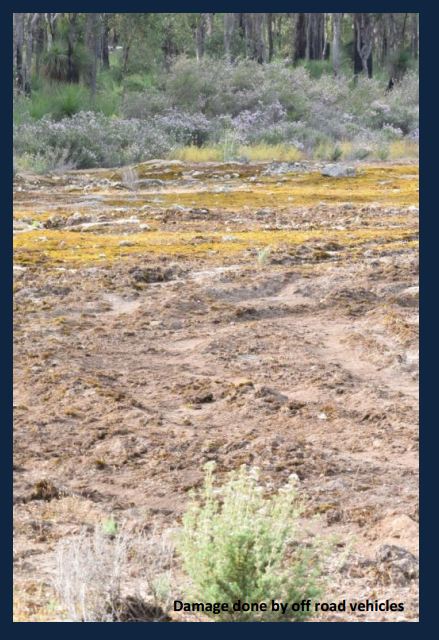
Five known sites were monitored in October-November 2015 with visible threats (off road vehicles and prescribed fire) observed at two of the sites.
The five populations, when combined, contained 286 flowering plants.
In 2016 a new population of 36 flowering plants was discovered and a further new population of 151 flowering plants was found in 2017.
In 2018 an old population that had not seen since 2011 was rediscovered and contained 23 flowering plants.
Currently around 3000 plants in nine populations are known. Given the difficulty of accessing many as yet unexplored outcrops it is thought very likely that ongoing searches will reveal further populations.
The conservation of this species appears reasonably secure.
Many populations are found in restricted, difficult to get to areas, providing them a high level of protection from accidental damage.
Although some habitat has been damaged by fire and off road vehicles the habitat on most rocks is in good condition and new populations are being located.
There have been some very positive outcomes as a result of ADORP.
Three new populations have been located, tracks have been closed to prevent entry to off road vehicles, a monitoring camera has been set up to record vehicles damaging orchid habitat at one site and land managers have committed to protect the granite outcrop habitat of the species.
The team is now undertaking a study to ascertain what pollinates the orchid, how successful it is (seed set) and what habitat is required to support the pollinator.
Adopt an Orchid – Summary
In summary, ADORP is proving to be an important source of information on poorly known but potentially rare and highly threatened orchid taxa, resulting in a better understanding of their conservation status in the wild.
It has enabled productive relationships with land owners and land managers, resulting in populations of orchids being protected and important recovery actions being implemented.
As a result of ADORP surveys some populations have been found to be larger than previously thought and new populations have been discovered. When taxa are considered to no longer be under threat they are provided a lower Priority status or removed from the program.
Conversely, once sufficient supporting information becomes available, taxa that have been found to be rare and highly threatened in the wild will be nominated as Threatened Flora. Once listed, they will receive a higher level of legislative protection.
For participants, the experience has been fun and rewarding, seeing rare orchids in the wild and working as a team with other dedicated orchid enthusiasts and conservationists.
There has also been a feeling of achievement when new populations are located or existing populations have been subject to recovery actions resulting in improved conservation.
This collaborative program is proving immensely valuable, enabling the public to make contributions to conservation efforts in partnership with government, land owners and land managers.
I would like to finish this talk by thanking Kim and Thea Hanson of WANOSCG for initiating the idea of ADORP back in 2010 and running with it with me during its implementation phase.
I would also like to thank my co-author Kevin Uhe who, when Kim and Thea had to pull out due to ill health, has enthusiastically taken up the position of coordinating ADORP, resulting in the program going from strength to strength.
And of course I must not forget the nearly 100 past and present volunteers. Without them ADORP would simply not be possible.
Further information on ADORP can be obtained by visiting:

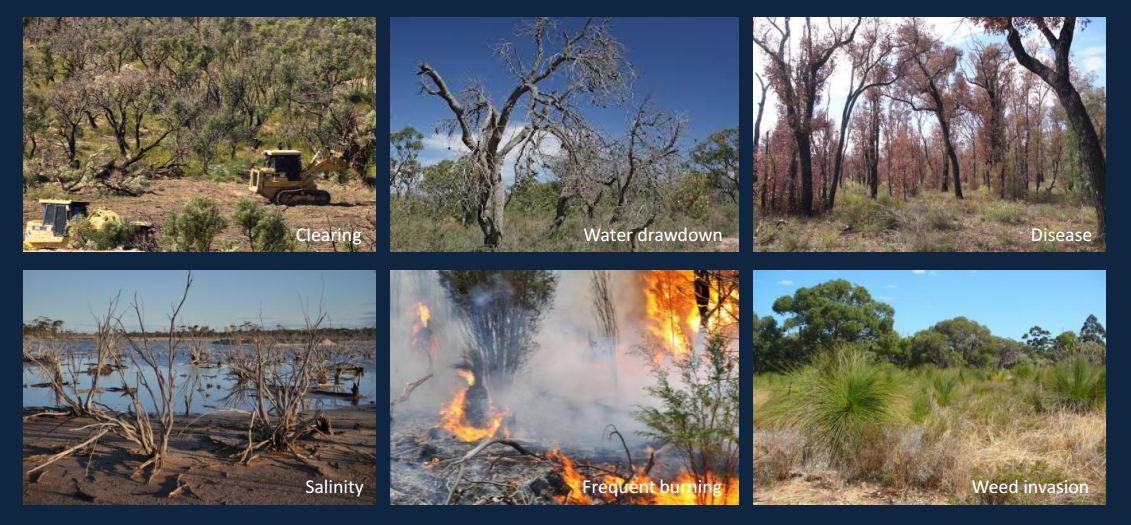
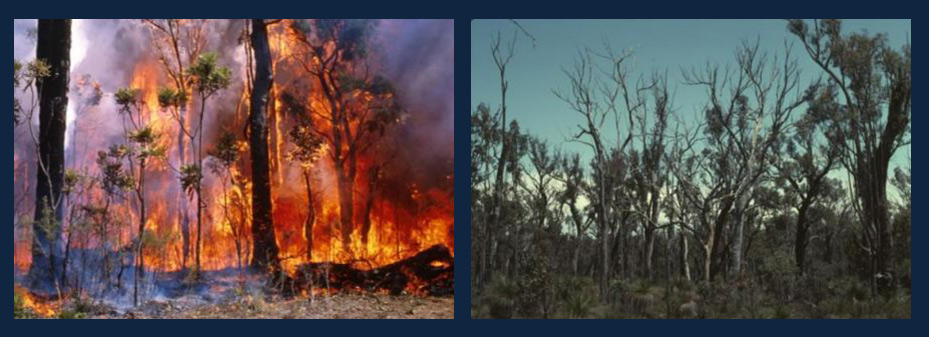

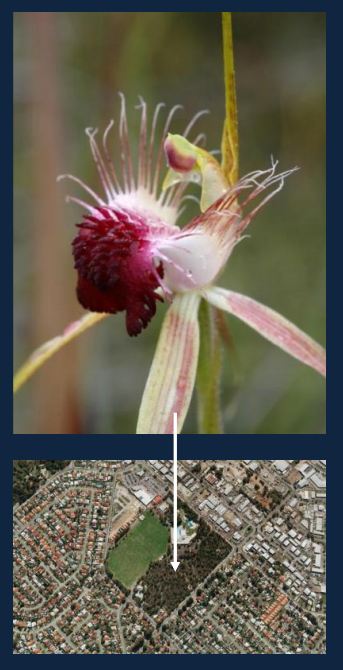
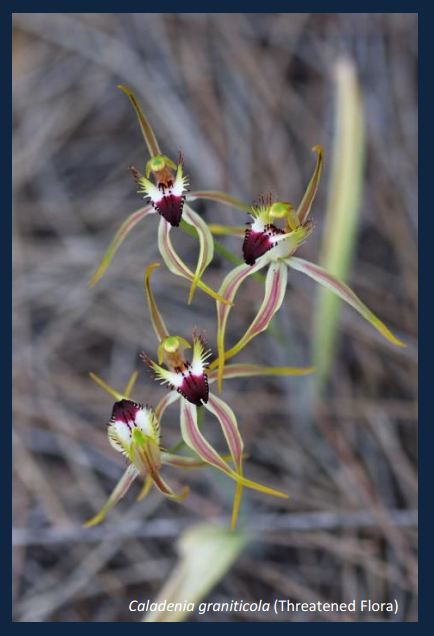
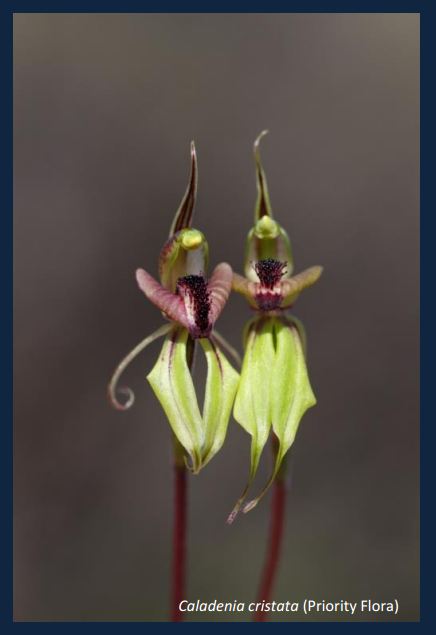
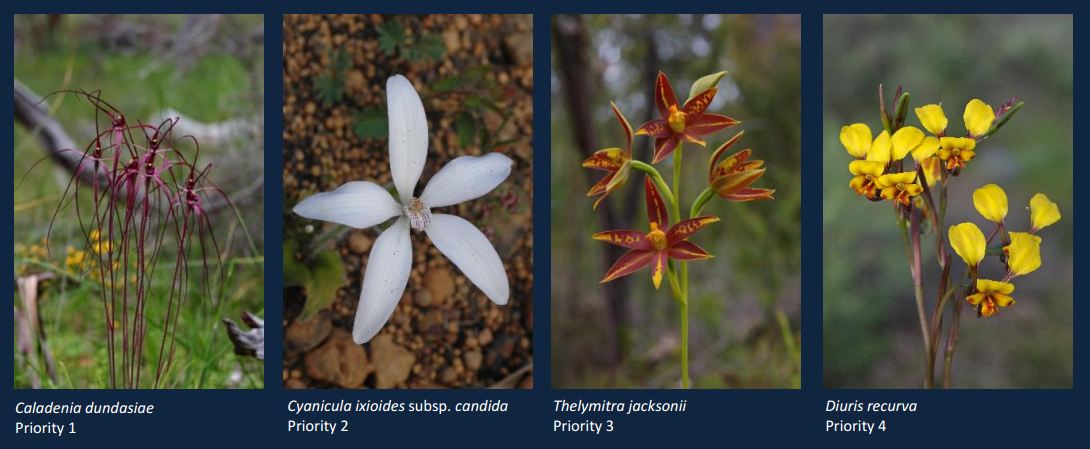


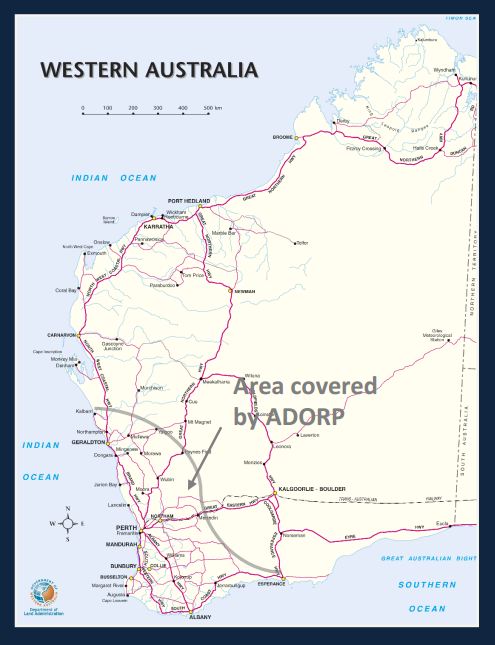

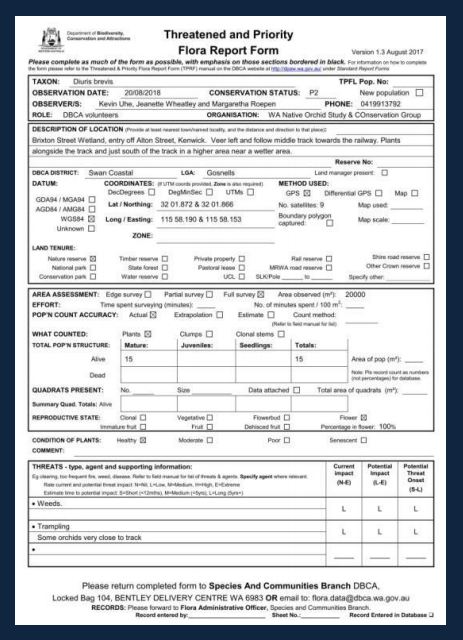
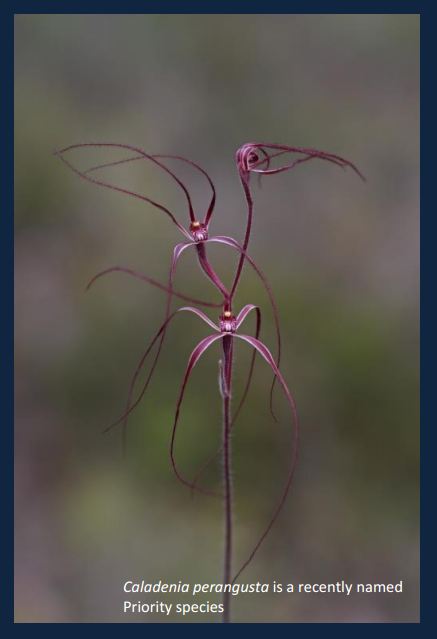
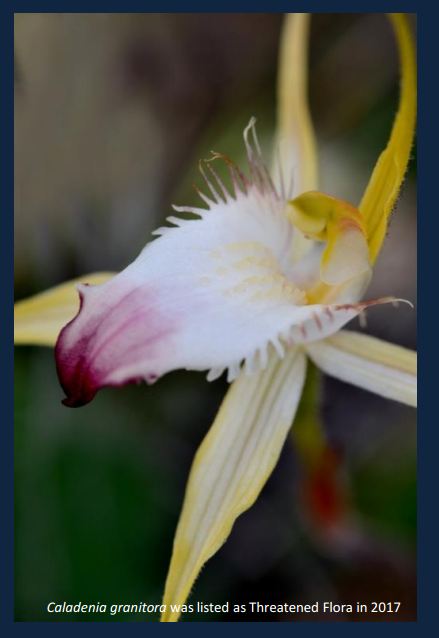
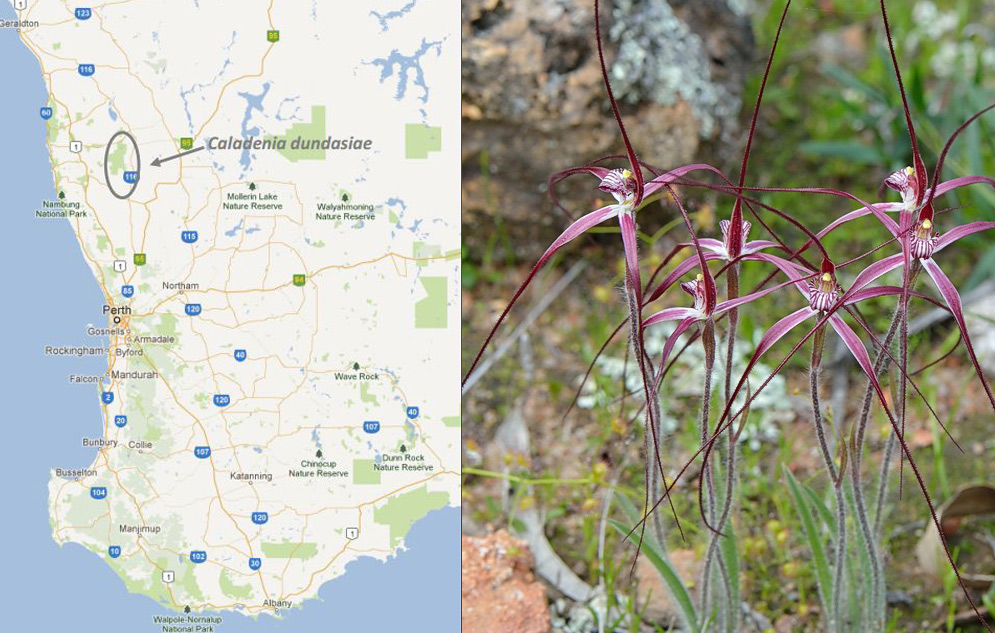
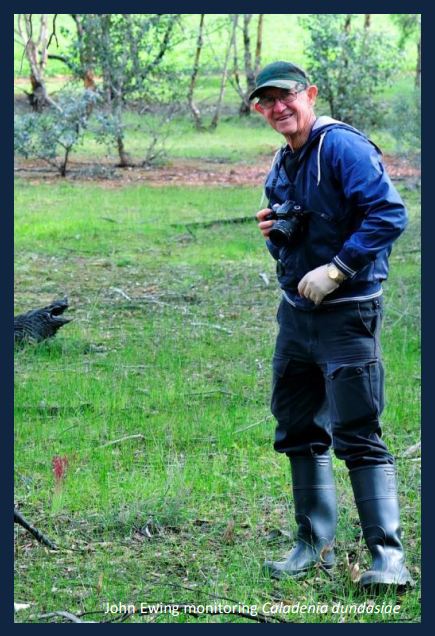
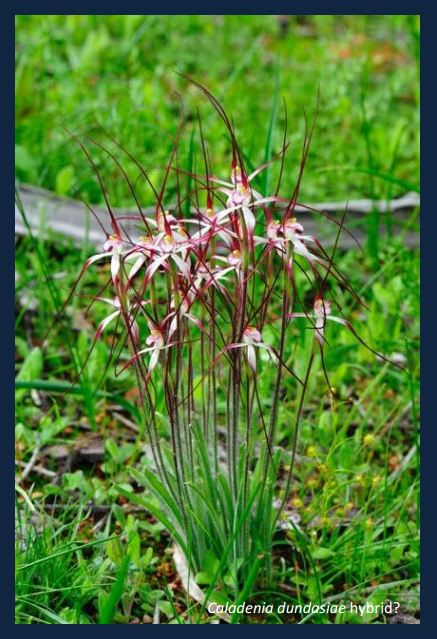
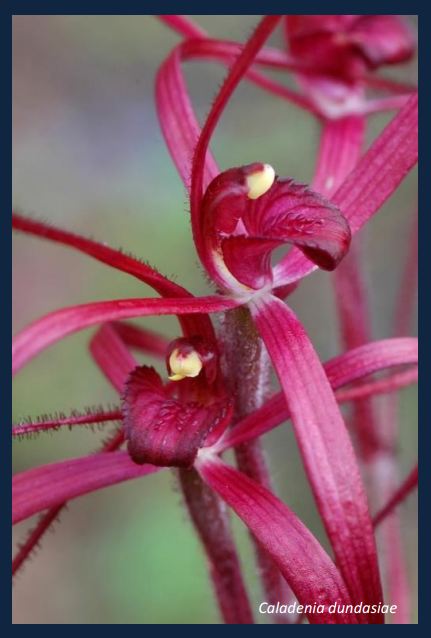
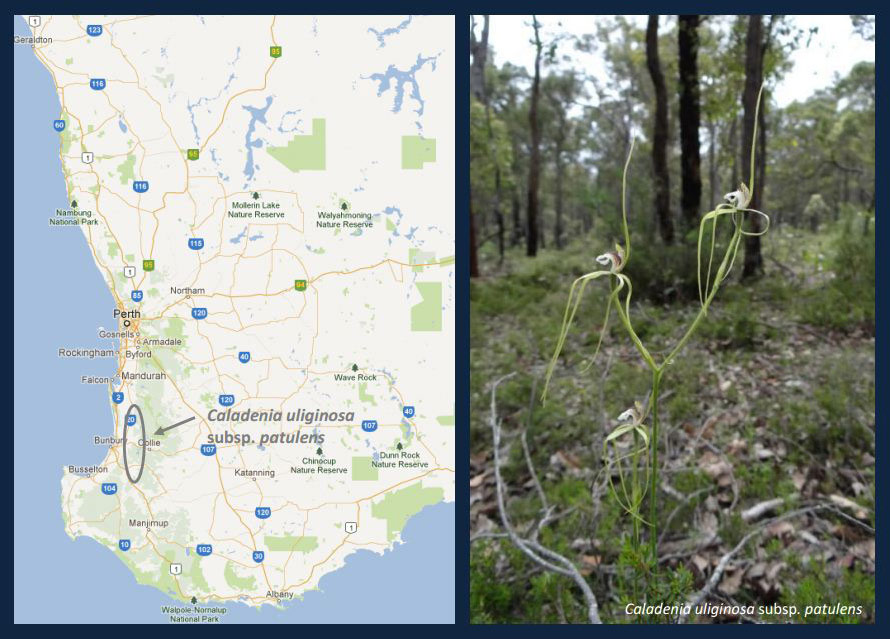

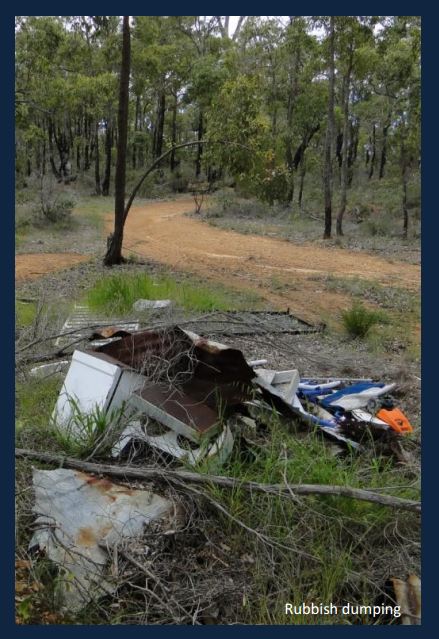
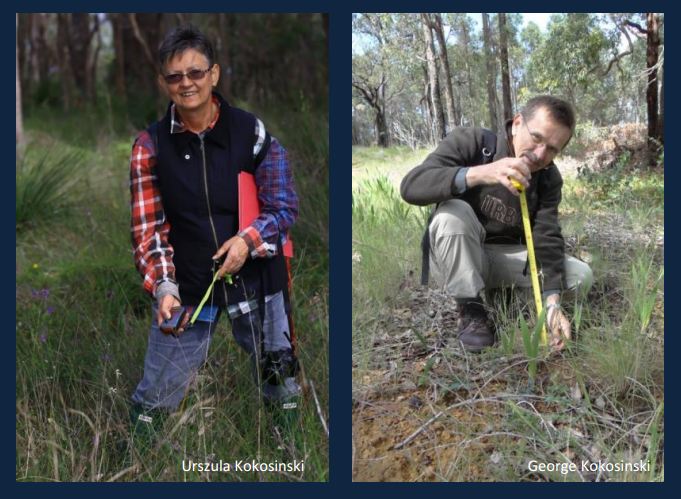
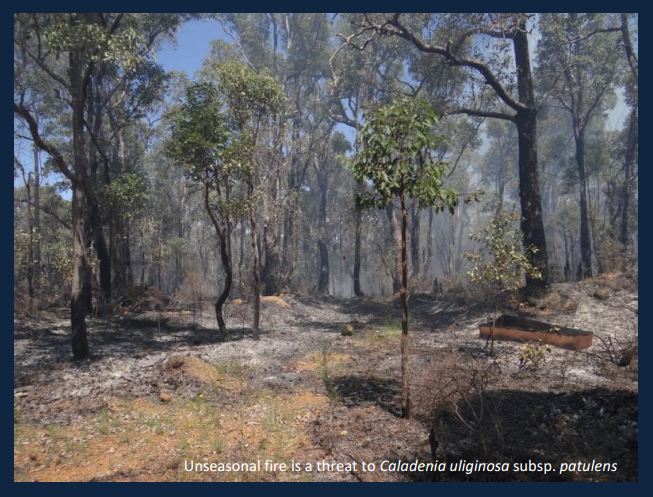
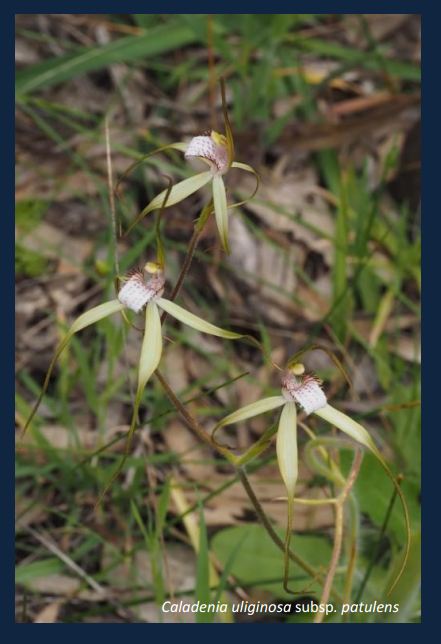
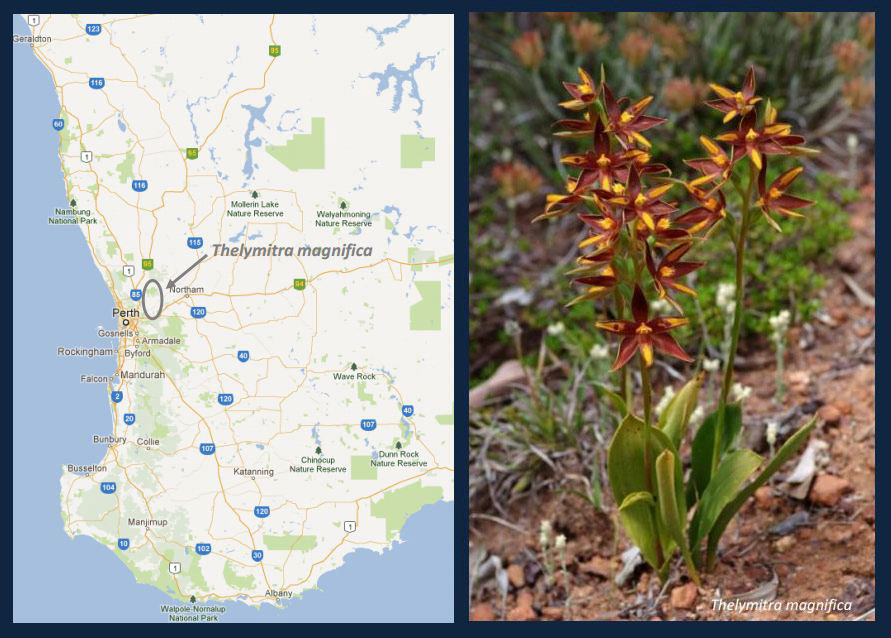


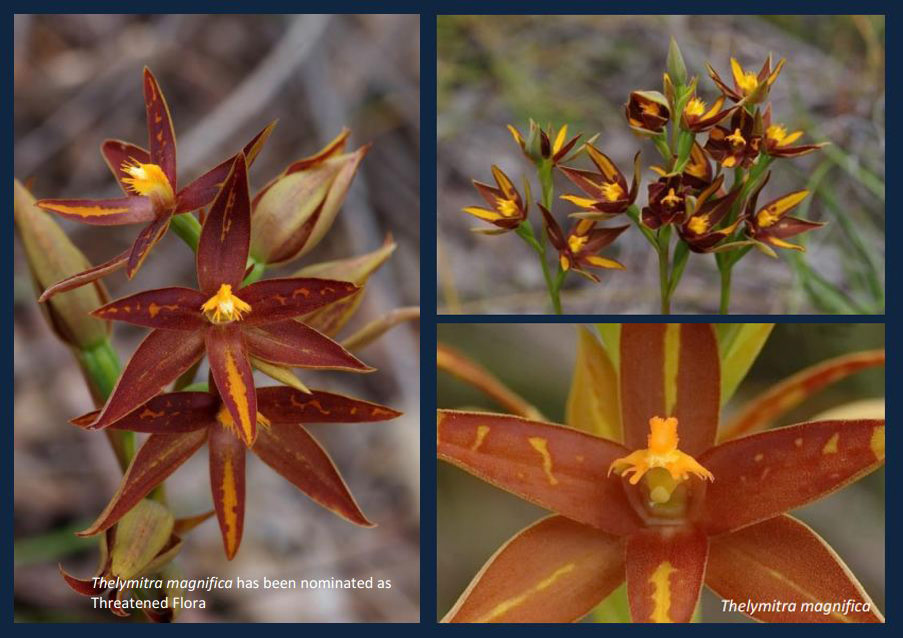




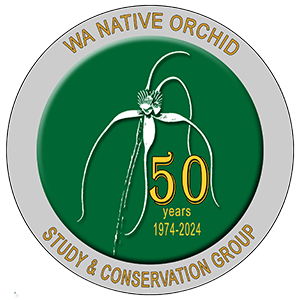
Hi Steve, thanks for your comments and notes. What you describe could be the Dale China Orchid (Cyanicula ixioides subsp.…